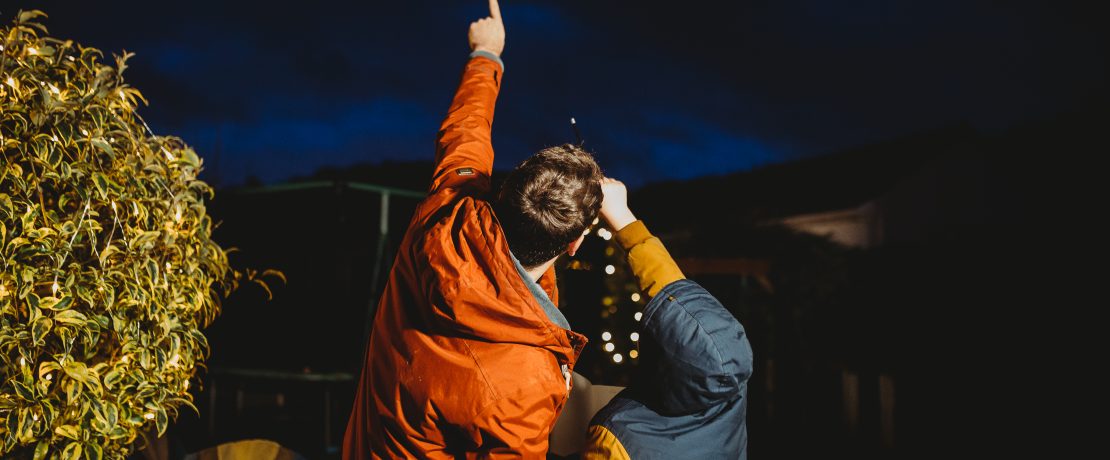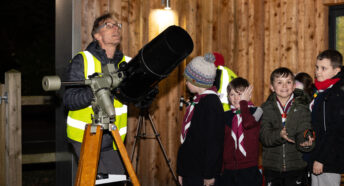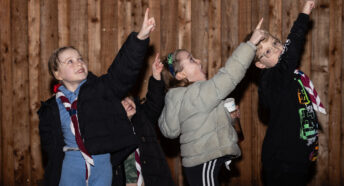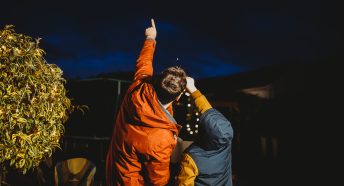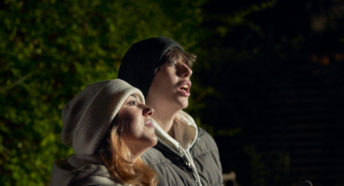Star Count 2021: explore what we learned
What the 2021 results of our record-breaking citizen science project tell us about the levels of light pollution near you – and what we can do about it.
February 2021 saw thousands of you stepping up for deep, dark skies and helping us count stars to measure light pollution in your area.
Despite chilly nights and the coronavirus lockdown, you broke records with more of you than ever looking skywards to Orion. Here’s what we learned from your counts.
The results are in
Our biggest ever Star Count, with over 7000 of you participating, showed that 2021 saw much lower reports of bad light pollution across the UK than in 2020.
Only 51% of our star-spotters said that they could see only ten or fewer stars, meaning that they were experiencing severe light pollution. In 2020, 61% of people were in that boat, so 2021 has seen a pretty dramatic drop in severe light pollution! In Staffordshire, this figure was a bit higher – 60% – but that’s much lower than the 82% who said the same the previous year.
We’ll be breaking down the results further to look at the extent of light pollution around Cannock Chase AONB and plan to carry out more technical surveys with the AONB Partnership. Cannock Chase is England’s smallest AONB. (Area of Outstanding Natural Beauty) but has the worst light pollution, as it is so close to built-up areas.
More dark skies, less light leaking
2021 also saw more of you telling us that you could see a whopping 31 or more stars in Orion! This means you’re seeing the most stars of all of our stargazers, and enjoying truly dark skies.
And there’s good news here, too – 5% of you told us you had truly dark skies this year. In Staffordshire, this was a little lower – 3.6%. This is another pleasing boost on the numbers of you experiencing this in 2020!
Explore our interactive map
Check out how your area shapes up and whether you’re you dazzled by light pollution or looking up at deep, dark skies.
A small number of counts didn’t make it onto the map, usually because of missing location information. As, as with any citizen science project, we spotted a few outliers that showed unusual results – these are still included here.
What we’ll do now
CPRE will continue its work to influence policy and celebrate dark skies, ensuring that as many of us as possible can enjoy them.
Our dark skies expert, Emma Marrington, says:
‘Looking up at a starry night sky is a magical sight and one that we believe everyone should be able to experience, wherever they live. And the great thing is, light pollution is one of the easiest kinds of pollution to reverse – by ensuring well-designed lighting is used only where and when needed, and that there is strong national and local government policy.’
Local councils can help, too, by considering dimming schemes to save energy (always of course in consultation with the police and community to ensure it’s the best fit for the area, and keeps everyone safe). We’ll keep engaging with councils to manage their lighting and cut carbon, help wildlife and let us all enjoy those starry skies.
